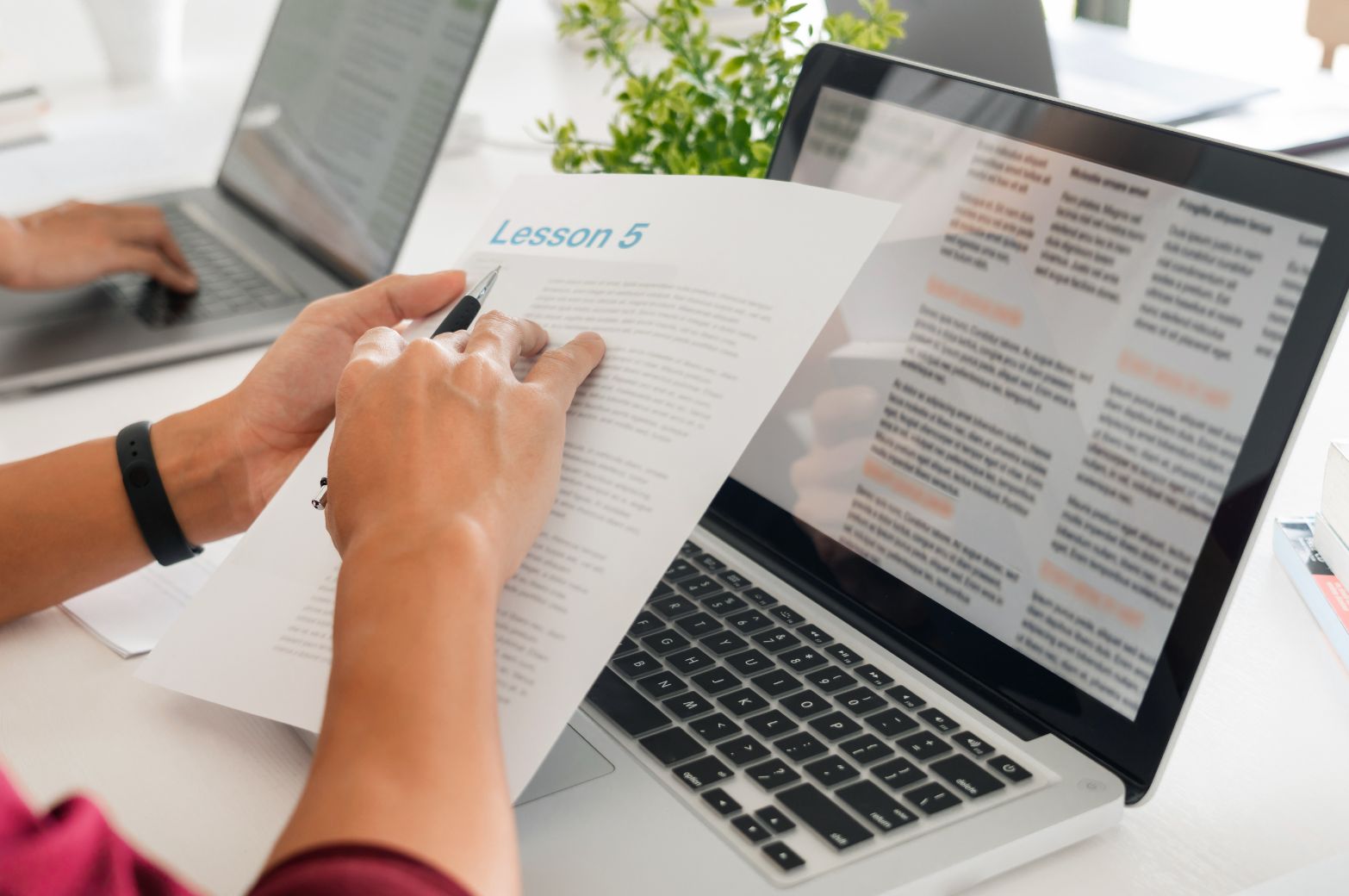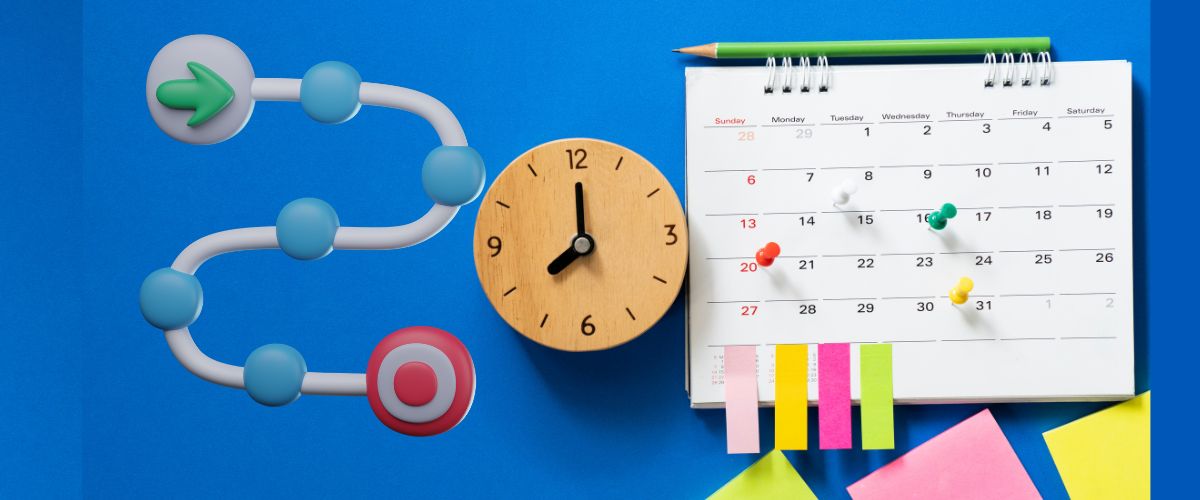Lesson Planning Strategy: Mapping Your School Year for Success
As a new teacher, the prospect of lesson planning can feel like sailing through uncharted waters. The waves of curriculum standards and the winds of classroom dynamics constantly shift. Smooth sailing requires a strong anchor and a well-charted course.
A lesson planning strategy can help you effectively navigate these waters and ensure that the journey is engaging for every student on board, and maybe even help you and your students find buried treasure.
Create a Pacing Guide
The first step to making a lesson plan that will guide you on your teaching voyage is to create a pacing guide. This will lay out a timeline for each subject and unit, so you’ll know exactly how much time you need to spend on each lesson.
Sarah D. Sparks, an Education Week journalist, said in an April 2023 article, “On average, 9 percent to 13 percent of instructional minutes are spent on students waiting for something to happen.” Your pacing guide can help you stay organized so less class time is spent transitioning from one lesson to the next.
In an April 2023 blog, Jamie Sears, the founder of Not So Wimpy Teacher, outlined 7 steps for creating a pacing guide:
- Choose a subject. Take this process one subject at a time. Once you’ve finished your first subject, come back to step 1 and repeat the process for each subject you teach.
- Break the subject into units of study. Using the skills students should know by the end of your class as a guide, break down your subject into smaller units.
- Break those units down into more specific lessons. Take what you expect students to already know and build up from there.
- Write the number of weeks you’d like to spend on each unit. Don’t worry about being realistic. Make an ideal projection of how much time you’d like to spend on each unit.
- Calculate the number of weeks you actually have. How many weeks of teaching are there in the school year? Don’t forget to factor in holidays and breaks!
- Determine the difference and edit the number. Take the number of ideal weeks per unit and measure it against the actual number so your result is a realistic goal.
- Write specific dates next to each unit. This will help you measure your progress throughout the school year.

Batch Planning
After creating your pacing guide, you’ll know how many lessons you’ll need to plan. To save time, Sears suggested using batch planning. If you’re using time in the summer to prepare for the next school year, planning all of your lessons in batches will save you from late nights and busy weekends during the school year. Sears offers two ways to batch plan your lessons: the 5-week plan and unit batching.
5-Week Batching
Take 5 weeks out of your summer. For each of those weeks, you’re going to plan 5 weeks of lessons. You can break this out however you like, 5 weeks of lessons in a single day, or 1 week of lessons for 5 days.
5-week batching is helpful if you don’t want to put too much time or energy into your planning. The number of lessons you need to plan per week is outlined for you, so you don’t have to think about it.
Unit Batching
If you prefer more creativity in your lesson planning, try the unit batching method. According to Sears, unit batching is, “the ultimate time-saver.” Take lesson planning a unit at a time. You’ll plan all the lessons for a single unit at once.
“This means your brain can focus on just one topic,” Sears said. “And once you finish the batching session, you won’t have to plan for that unit ever again.”

Design Engaging Lesson Plans
In a December 2021 ASCD blog, education consultants Heidi Hayes Jacobs and Allison Zmuda said, “Learners at every age should be able to decipher with ease the tasks and activities teachers plan for them. If the task isn’t clear and compelling, it curbs engagement.”
Make your lesson plans easy for you to explain to your students. Make the content and activities exciting so your students want to learn, and give students easy ways to measure their progress.
“[Students] need to experience some successes; they need to be acknowledged for that success,” Sparks explained in her April 2023 EdWeek article.
Key Components of Engaging Lesson Plans
Jacobs and Zmuda also introduced a lesson planning method called, “learning sets.” These charts use student-oriented, action-based prompts that “communicate directly with students and their families to capture the story of the learning design.”
Think about how to help your students engage, examine, and demonstrate new skills. Here are some of the main components of learning sets that can help in planning any lesson:
- A compelling storyline. A story goes a long way toward helping students engage in content.
- Episodes framed by learning targets. Break your lesson into manageable chunks using specific learning targets.
- Action verbs. Keep students engaged by using activities. These activities can be simple “answer the question on the board” exercises, or they can be related activities.
- Iconography. Use icons and images on assignments and worksheets that will clearly depict the type of work students are expected to do.
“I saw learning sets…as an opportunity to invite students into the process and an effective reflection tool for already established units,” said Matt, a Vista High School teacher, in Jacobs and Zmuda’s blog.
Customize Lessons to Student Needs
Because each student comes to your class at a different starting point, you often must customize lessons to multiple learners and levels. Some will be more advanced, some will need a little extra help. Studies Weekly is built with differentiation in mind, and our products already have research-backed differentiated learning strategies built right in. Even better, these strategies don’t require hours of extra teacher preparation. A list of our top seven strategies can be found in our Differentiation blog.
These tools are included in your Teacher Edition, and are also available through the professional development resources in the Training Tab at Studies Weekly Online.
Plan Student Grouping Into Your Lessons
One way to customize your lessons to your students’ needs is to plan group activities. You can group students based on what they need to learn next, linking what they already know to where they need to be by the end of the year. Grouping needs to be authentic to their learning needs – for example, grouping students according to reading level outside of reading groups doesn’t help you evaluate where they are within the learning activities.
Grouping students according to the skill or knowledge they need next allows you to give each group assignments and activities to work on as a team that help them get to the next point in their learning.
Need help making your lesson map for the upcoming school year voyage? Studies Weekly has tons of resources that can help teachers meet the tempests of education head-on. For more information, log into Studies Weekly Online.
